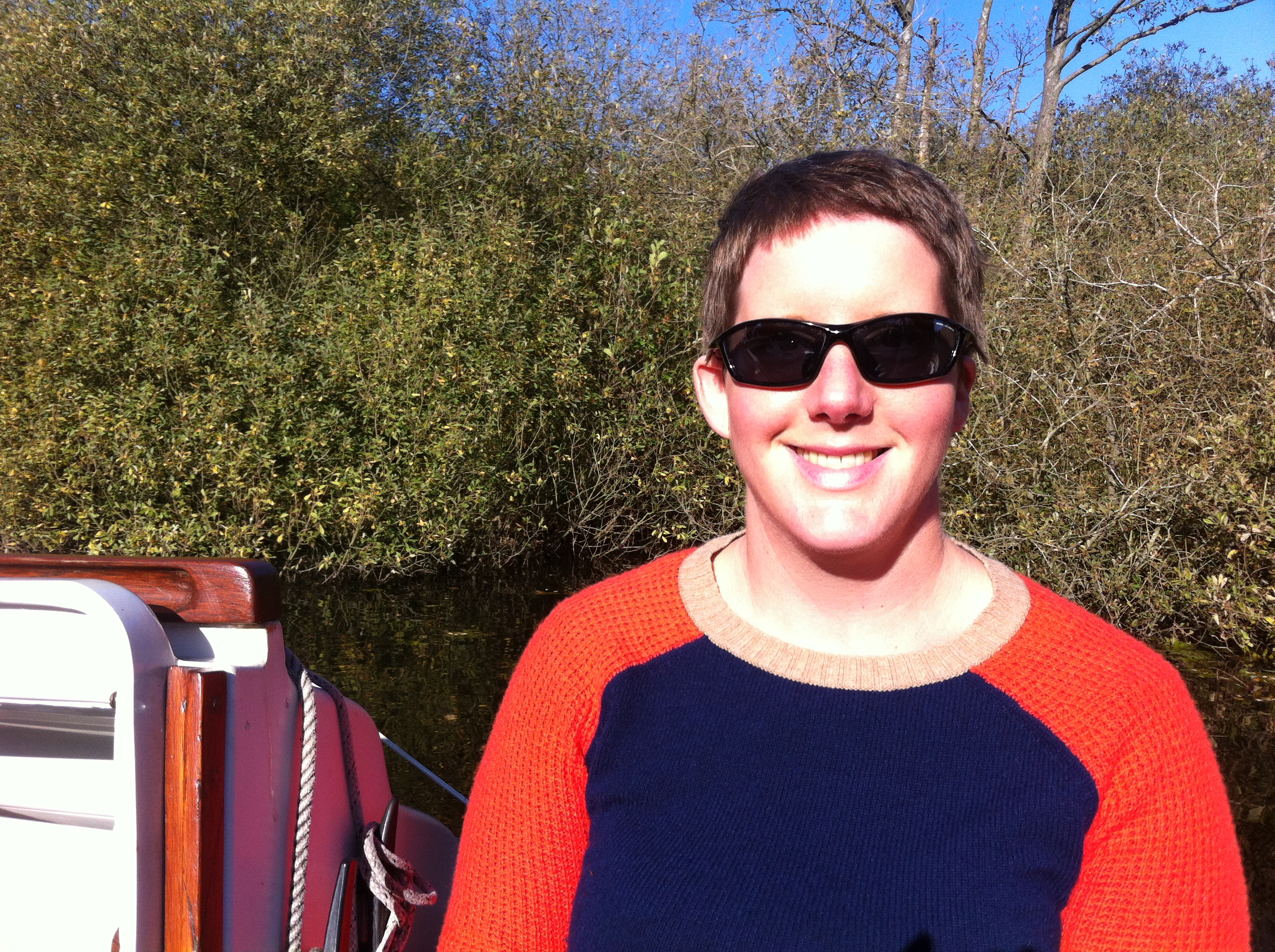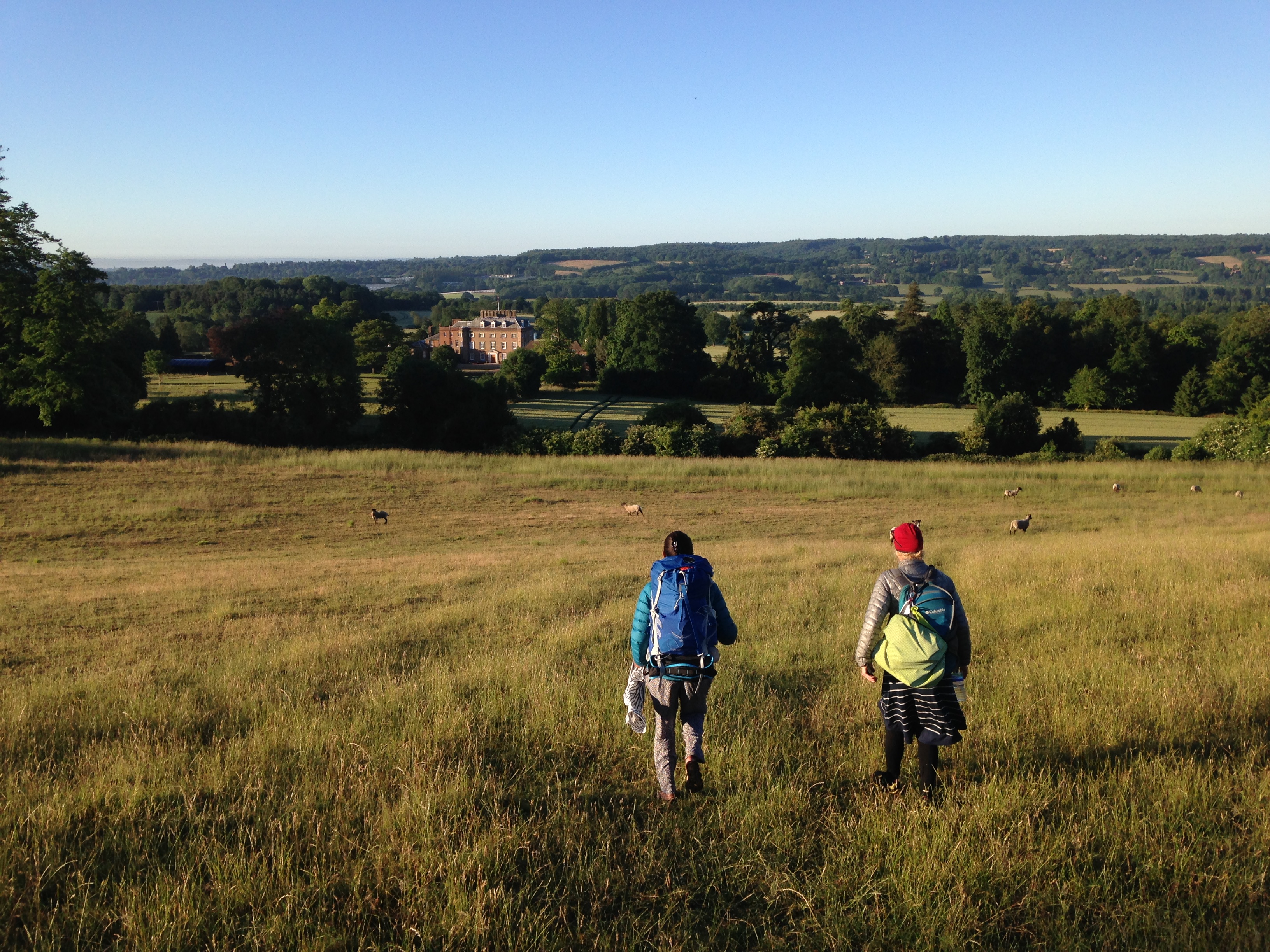Do you know the one about the Gobhaun Saor? He was an Irish peddler who, embarking on a long journey on foot, asked his son to shorten the road. The son knew, of course, that the best way to shorten any road is to tell a story as you walk.
My dad used to start many a childhood walk with this framing story, and then launch into his own made-up tale which, miraculously, always drew to a close just as the car/beach/café came into view. I inherited my dad’s love of the spoken word, and a hearty walk, and these days I love finding walks which have stories attached; myths of landscape, history and folklore which enrich the journey and activate the soul, as well as the sole!
Here are four of my favourite walking tales
BLACK SHUCK, NORFOLK
I grew up in Norfolk, and the legend of the giant hound that haunts the clifftops there has long been in my blood. Black Shuck has apparently been sighted numerous times since the 12th Century and has been the inspiration for a number of ‘hell hound’ stories, and more recently, a brand of local artisanal gin!
The phrase ‘black dog’ is often used as a metaphor for depression, and I think the two are related; like Black Shuck, depression can follow your around, sink its teeth into you, and be quite terrifying. But treat it right, learn to listen and understand what it has to teach you, and the hound is, after all, just a dog. As Kate Tempest says in her poem ‘Hold Your Own’:
Know the wolves that hunt you,
In time, they will be the dogs that bring your slippers.
Love them right and you will feel them kiss you when they come to bite.
I suffered from depression in my teenage years and being dragged out for a hearty walk by my well-meaning family was a common occurrence. I guess I managed to tame my ‘Black Shuck’ and now there’s nothing I love more than a good stomp along the stunning Norfolk Coastal Path, which runs from Hunstanton to Great Yarmouth. The sand dunes at Holkham, seal colony at Blakeney Point and cliffs of Weybourne are breath-taking, with loads of accommodation options including a YHA at Wells and brilliant backpackers’ hostel at Burnham Deepdale.
It has been proven that walking in nature is good for our mental health, so, as Kate Tempest’s poem continues, “breathe deep on a freezing beach”, and give that black dog a run for its money!

BEDDGELERT, SNOWDONIA
Speaking of dogs, brace yourself, this is a sad one. Llewelyn had a faithful dog called Gelert, who guarded Llewelyn’s infant son since his wife had died in childbirth. One day, Llewelyn came home to find the baby’s cot empty, and the dog cowering, blood dripping from his mouth. Coming to an awful conclusion, Llewelyn took Gelert outside and shot him. The sound of the gunshot was echoed by a baby’s cry and, running back inside, Llewelyn found his son unharmed, and in the next room, the ferocious wolf which Gelert had slain. Full of remorse, Llewelyn buried Gelert, and his grave is situated just south of the village.
With a campsite nearby, the beautiful Llyn Dinas lake for wild swimming, and the Snowdon access paths less than 5 miles away, this is a wonderful location for a weekend hike/swim/camp. If you can hold back the tears, that is!
DEVIL’S DYKE, EAST SUSSEX
Devil’s Dyke is one of the iron age hill forts which are scattered along the South Downs Way, the 100-mile footpath from Winchester to Eastbourne. There’s a viewpoint and pub at Devil’s Dyke and buses run up there daily from Brighton.
Legend has it that the dyke (meaning ditch) was dug by the Devil in a plot to drown all the churches between the sea and the South Downs. An old woman caught the Devil at it and lit a candle, which made her cockerel crow and the Devil, thinking daylight was coming, ran away.
I love this simple story for its metaphorical message which can be summed up in the saying, ‘It is better to light a candle than to curse the darkness’. Light is our war with darkness, and these hill forts mark the beacons that would have been lit along the ridge in times of defence. One light would trigger the next and could be seen as far away as the North Downs in Kent. By shining our light brightly, we encourage others to shine.
There are campsites and hostels all along the South Downs Way. My favourite stretch is a 4-day route from Amberley to Eastbourne, camping at Steyning, Housedean and Alfriston campsites, with a swim at Birling Gap on the last day, and fish and chips on the pier at Eastbourne to finish.
![]()
EYAM, PEAK DISTRICT
In 1665 the bubonic plague arrived in the village of Eyam, via a delivery of linen from London. Seeing that the plague would soon ravish the whole area, the vicar led the decision to close the village’s boundaries, sacrificing most of the population to the plague, but saving thousands in the wider community.
To enable trade with the neighbouring village, whilst still quarantining themselves, the villagers made use of the boundary stone between Eyam and Stoney Middleton. Traders would leave parcels of food at the stone, and shopkeepers from Eyam left money soaking in vinegar in holes drilled into the stone, thus preventing the spread of infection.
The ‘Peak Pilgrimage’ is a glorious 3-day walk from Ilam to Eyam, via the Dove and Derwent valleys, with lots of opportunities for wild swimming and three (possibly haunted) youth hostels along the route at Ilam, Hartington and Eyam.

Brighton based AQ, Julia, is a freelance expedition leader, stand-up comedian and wilderness therapy facilitator (www.ipsewilderness.co.uk). She loves travel, hiking and wild swimming and has recently acquired a labradoodle puppy called Sheikh to accompany her on her adventures!

